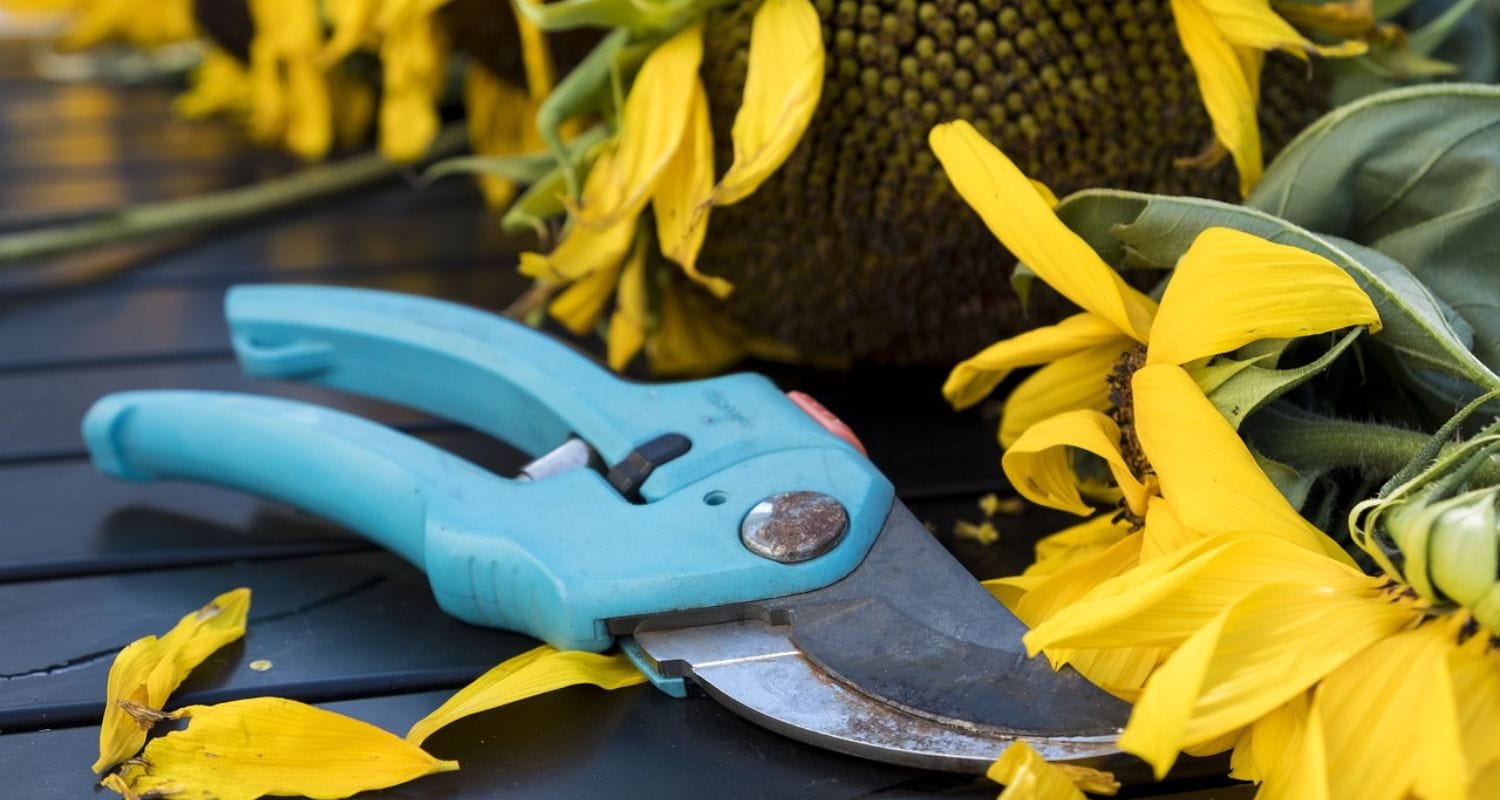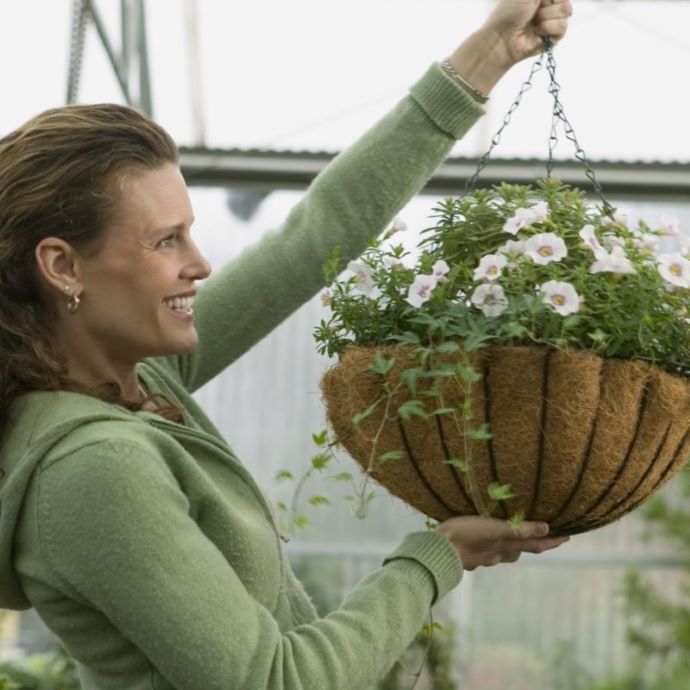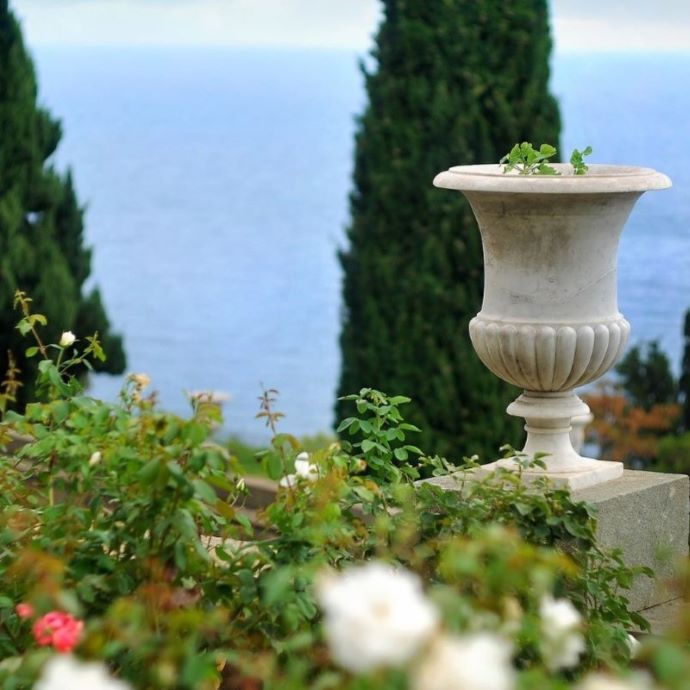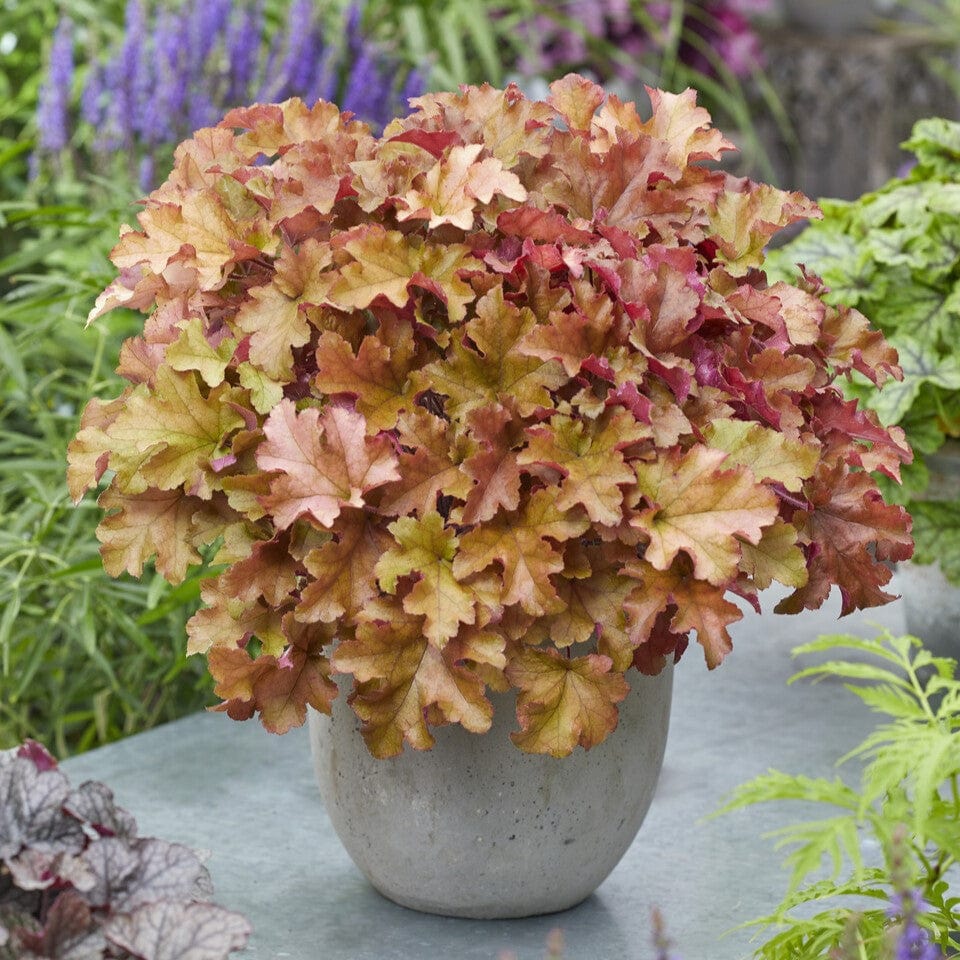Advice & Inspiration
Deadheading Flowers: A Beginner's Guide

What is deadheading? Well, deadheading means removing the dead flower heads from your plants as they fade or die. There are several reasons why this is a good idea, which I’ll go into in more detail below. The main benefit of deadheading is that it encourages the plant to produce more flowers, making your garden displays look their best for longer.
Sounds a bit morbid.
It does, doesn’t it? It’s almost as if gardening terms were invented by people who were handier with a spade than a keyboard (see also pricking out, chitting, hardening off and mulch). Maybe we should rename it to better reflect contemporary sensibilities. Something like decapitation, decerebration, deflowering… yeah maybe not. As you were.
Jump to:
Why do we deadhead?
Biology lesson incoming… like all life on earth, plants are here to reproduce, and the way most of them do that is through flowers. Flowering plants typically have the same life cycle (although they complete it in different timescales) which consists of growing from seeds, flowering, being pollinated and producing seeds of their own.
If the dead flowers remain, the plant knows it’s successfully completed that stage of the cycle and can move on to produce seeds. However if you remove that flower before the seeds can form, the plant knows it has to produce another in order to reproduce. Good news for your window boxes.

Why do we keep going on about it?
Deadheading is the single best thing you can do to get more flowers from your plants, but that’s not the only reason. Here’s why we think you should make deadheading your new hobby:
1. Better looking plants
Deadheading only takes a few minutes a day (if that), and it’s worth it to get a few more days or weeks of bloomtime, especially for flowers like roses that would only produce one flush of flowers otherwise. It also encourages stronger stem and foliage growth, as there’s more energy available for that too.
2. More flowers
When the plant is free to put all its energy into flower production, it naturally wants to bloom as much as it can. It’s especially worthwhile for flowers that bloom in flushes, where deadheading can spur them into a whole new round of flowering after they’d normally be finished for the year.
3. A tidier garden
I love a mess wildlife corner as much as anyone, but even I have to admit that my plants look better without dead bits, droopy flower heads and petals falling off before scattering themselves to the four winds (looking at you, peonies, roses and camellias).
If you deadhead your flowers quick enough, you’ll avoid having to tidy all of this up. In addition, if you have self seeding flowers like foxgloves and aquilegia, you’ll know that they love to pop up randomly wherever they can. If you’d prefer to avoid this and choose which plants go where, deadheading is your friend, as it stops the seed pods forming.
4. Healthier plants
If dead flower heads are left on the plants, they can sometimes rot and spread moulds and mildews to the other parts of the plant, and no one wants that. Removing the flowers before they rot can help to prevent this - that goes for any dead leaves and stems too, which you can remove at the same time as deadheading.
5. It’s actually really therapeutic
Or is that just me? I sometimes like to take a short break from writing about plants, go round the garden snipping off dead flowers for five minutes, then return refreshed and inspired. Try it!

Which plants should I deadhead?
Most annual and perennial flowering plants will benefit from deadheading (see the exceptions below), especially those which bear their flowers singly or for a short period of time.

When is the best time to deadhead?
The best policy with deadheading is to look at your plants every day or two, removing the flowers as soon as they start to fade. This will typically be throughout the summer months, from May to October depending on which plants you have.
Some plants only need deadheading once throughout the season - these tend to be those with lots of small flower buds clustered on a stem, like lupins and delphiniums.
The best time to deadhead these for a new flush of flowers is in late May. This is sometimes called the Chelsea Chop, as it’s done around the time of the RHS Chelsea Flower Show, often by the show’s exhibitors who want their plants to look their best!

How to deadhead flowers
Just as there’s more than one way to skin a trash possum (so I’m told), there’s more than one way to deadhead flowering plants. The method varies according to which kind of plant you have, but none of them are especially difficult.
How to deadhead annual bedding plants
These are the tender flowers that you grow in pots, hanging baskets and borders, and which only last for one season (typically from May to September). You get a lot more out of them if you deadhead, and the more often the better. For most of these, you can simply pinch off the dead flowers by hand, or use small garden snips or scissors.
For pelargoniums (known as annual geraniums), pinch off the individual flower stems or use snips to remove whole faded clusters. If they’re ready to be removed, they’ll come off easily, but if there’s any resistance, leave it a day or two.
How to deadhead flowering shrubs
For hybrid tea roses, snap them off by hand at the stalk, just below the flower head. If they’re a bit tough, you can also use secateurs or scissors. All other roses (including climbing roses) should be deadheaded by cutting off individual flower heads or clusters down to just above the first leaf.
Other shrubs, including rhododendrons, azaleas, camellias, tree peonies and lilacs, can be deadheaded by hand, snapping or pinching off the heads where they join the stem, or by cutting with secateurs just below the flower head. Look out for any new buds developing under the dead flower, to avoid damaging them.
How to deadhead climbers
Only do this if the plant is accessible - I don’t want any ladder accidents on my conscience! Climbers with lots of flowers can be deadheaded selectively - the seedheads on clematis for example can be quite pretty, so you might only deadhead around half to two thirds of them and leave the rest for the birds. You can snip these off at the base of the flower head.
Repeat flowering climbing roses should be deadheaded in the same way as shrub roses. Rambling roses tend to have quite good hip production, so you might consider deadheading these selectively as above, leaving some of the dead flowers on the plant, where they’ll develop into attractive fruits for the birds to eat (or for you to use in syrups and cordials…).
How to deadhead perennials with single flowers
Perennials that bear their flowers on single stems (such as echinacea, rudbeckia and leucanthemum) can easily be deadheaded by pinching or snipping off the flowers just below the head.
How to deadhead bushy perennials
For perennials with a bushy or clumping habit that produce masses of flowers (such as lavender or nepeta), wait until most of the flowers have faded or died, then give them a trim from the top with secateurs or scissors.
This encourages the plant to grow more evenly, with new bushy growth and flowers at the sides, as well as keeping it neat and well shaped. Alternatively, you can leave this job until winter or early spring, allowing the birds to eat the seeds first.

Are there any plants I shouldn’t deadhead?
Some obliging plants don't need deadheading, as they take care of that themselves. These include fuchsia, annual lobelia and salvia, which helpfully deadhead themselves.
There are some plants for which the seedheads are the main attraction, like nigella, honesty and physalis - don’t deadhead these or you’ll be disappointed in the autumn.
It should be said that deadheading doesn’t work on all flowers, as some will only produce one flush of flowers, such as poppy and pulmonaria. You can cut down these plants after flowering if they look a bit tatty, but the only thing they’ll produce more of is foliage.
Leave off deadheading also if you’ve got a plant that produces so many flowers that it would take you several days to deadhead it, such as deutzia, spiraea, thalictrum, aster or alyssum. Unless you’re really bored.
The same applies to any climbing plant that’s in a dangerously inaccessible place, or flowering trees which would require a ladder to deadhead.

Do I have to deadhead?
Absolutely not! Feel free not to bother, and use one of the following reasons as justification:
Feeding the birds
Garden birds will appreciate it if you leave some seeds, hips and berries on your plants when food for them is scarce over winter. Some of their favourite seeds include sunflower, rudbeckia, cosmos, echinacea, coreopsis and eryngium, and if you have a rose that produces decent hips (like many wild and rambling roses), you may want to leave these on for the birds too.
Collecting the seeds
If you leave the flower heads to go to seed, you can collect this up, typically in autumn, and save it to plant elsewhere, give to a friend or take to a local seed swap. This is a good idea if your garden is new or lacking in plants, as it will help to fill gaps in your borders for free.
It’s what nature intended
The natural life cycle of plants includes reproduction, and if you’re keen on gardening in a more natural or sustainable way, you’ll probably want to encourage this.
Leaving some or all of your flower heads to develop into seed pods not only provides food for wildlife, encouraging them into your garden, but allows the plants to be distributed over long distances by birds, increasing the diversity of your local environment. As with most things in the garden ecosystem, maintaining a healthy balance is usually the best policy.

What to do with the cuttings
Save the seeds
Sometimes by the time I deadhead my aquilegia, they’re already forming seed heads. Oops. If they’re not in a place I want them to fall and reproduce themselves, I cut them off and scatter them in the barer parts of my garden. You could also keep them in envelopes to dry, and swap them with your friends and acquaintances.
Cut flowers
Not strictly deadheading, but some plants in the cutting garden - such as dahlias, cosmos, rudbeckia and roses - will produce more flowers when you pick them, so you can feel even better about filling those vases.
Insect habitats
Add your cuttings to a log pile to make a vital habitat for insects like beetles, woodlice and centipedes. They’ll shelter amongst the piled up vegetation and will feed on it as it decays.
Compost
Everyone’s a winner with compost. Just add your flower heads to your compost heap or bin and wait for them to turn into lovely fertiliser to nourish next year’s plants. It’s the circle of life, and it moves us all.
Inspired? Find out more about how to make your flowering perennials last longer.


















